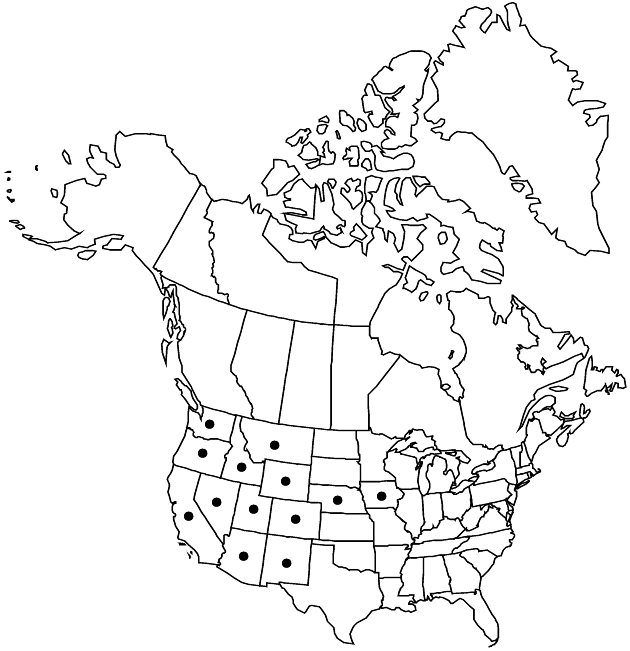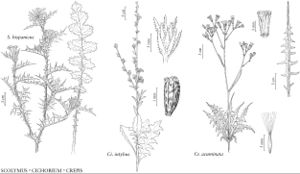Crepis acuminata
Trans. Amer. Philos. Soc., n. s. 7: 437. 1841.
Perennials, 20–65 cm (taproots deep, woody, caudices swollen, branched, often covered by old leaf-bases). Stems 1–5, erect, stout, branched near or beyond middles, tomentulose (at least proximally). Leaves basal and cauline; petiolate; blades elliptic to lanceolate, 8–40 × 0.5–6 (–11) cm, margins deeply pinnately lobed, lobes 5–10 pairs, usually lobed (± halfway to midveins, lobes entire), apices long-acuminate, faces ± tomentulose. Heads 30–70 (–100+), in compound, corymbiform arrays. Calyculi of 5–7, triangular, tomentulose bractlets 1–2 mm. Involucres cylindro-campanulate, 8–16 × 2–3 mm. Phyllaries 5–8, (medially green) lanceolate, 8–12 mm, (margins yellowish, often scarious), apices acute (ciliate), abaxial faces usually glabrous, sometimes sparsely tomentulose, adaxial glabrous. Florets 5–10 (–15); corollas yellow, 10–18 mm. Cypselae pale yellowish-brown, subcylindric, 6–9 mm, apices ± narrowed (not beaked), ribs 12; pappi white, 6–9 mm. 2n = 22, 33, 44, 55, 88.
Phenology: Flowering May–Aug.
Habitat: Dry rocky hillsides, ridges, grassy flats, open pine woods
Elevation: 1000–3300 m
Distribution

Ariz., Calif., Colo., Idaho, Iowa, Mont., Nebr., Nev., N.Mex., Oreg., Utah, Wash., Wyo.
Discussion
Crepis acuminata is identified by the narrow, pinnately lobed leaves cleft about half way to the midrib and with long-acuminate apices, heads with relatively few florets, relatively small involucres, and glabrous phyllaries. The fertile diploid form of this species is most widespread (E. B. Babcock 1947). In addition, there are apomictic, polyploid populations. The latter often are more variable in leaf size, shape, and indument, and can be difficult to distinguish from C. pleurocarpa and C. intermedia.
Selected References
None.
Lower Taxa
"fine" is not a number.
